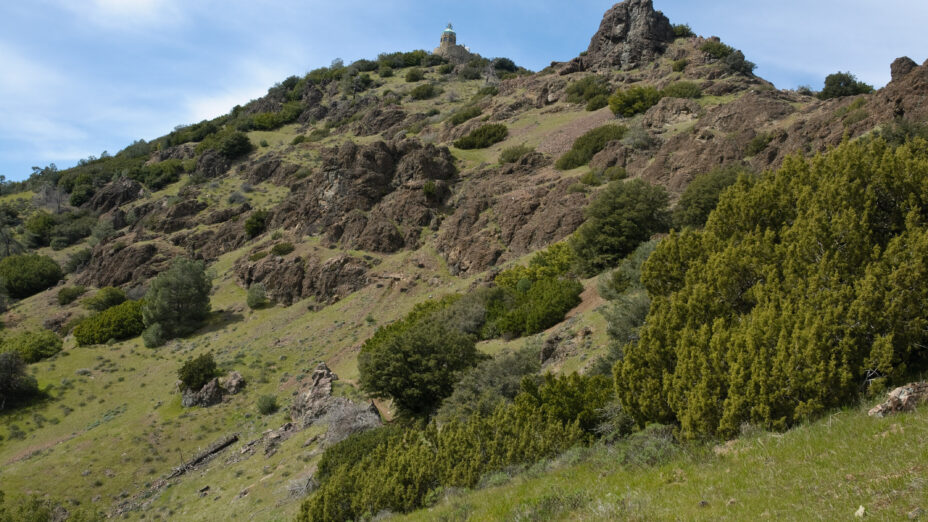
Our beloved mountain has a complex geological history and reveals the processes that shaped the Coast Ranges over millions of years.
During the last three decades, our understanding about the geological history of Mount Diablo has evolved a great deal, illuminating the hidden processes that shaped our mountain and surrounding ranges.
One facet that is particularly fascinating is that although the rocks that form the mountain are incredibly old, the mountain is quite young by comparison. Join me on a trip through time to find out why our mountain is so amazing.
1. Eagle Peak to Mitchell Rock, Mount Zion, and Murchio Gap: Coast Range Ophiolite
The Mesozoic rocks that are on Mount Diablo were formed during the Jurassic period—201 to 145 million years ago.
These rock structures typically show up as vertical formations that were originally formed a mile or more underwater and have been pushed up by plate tectonics.
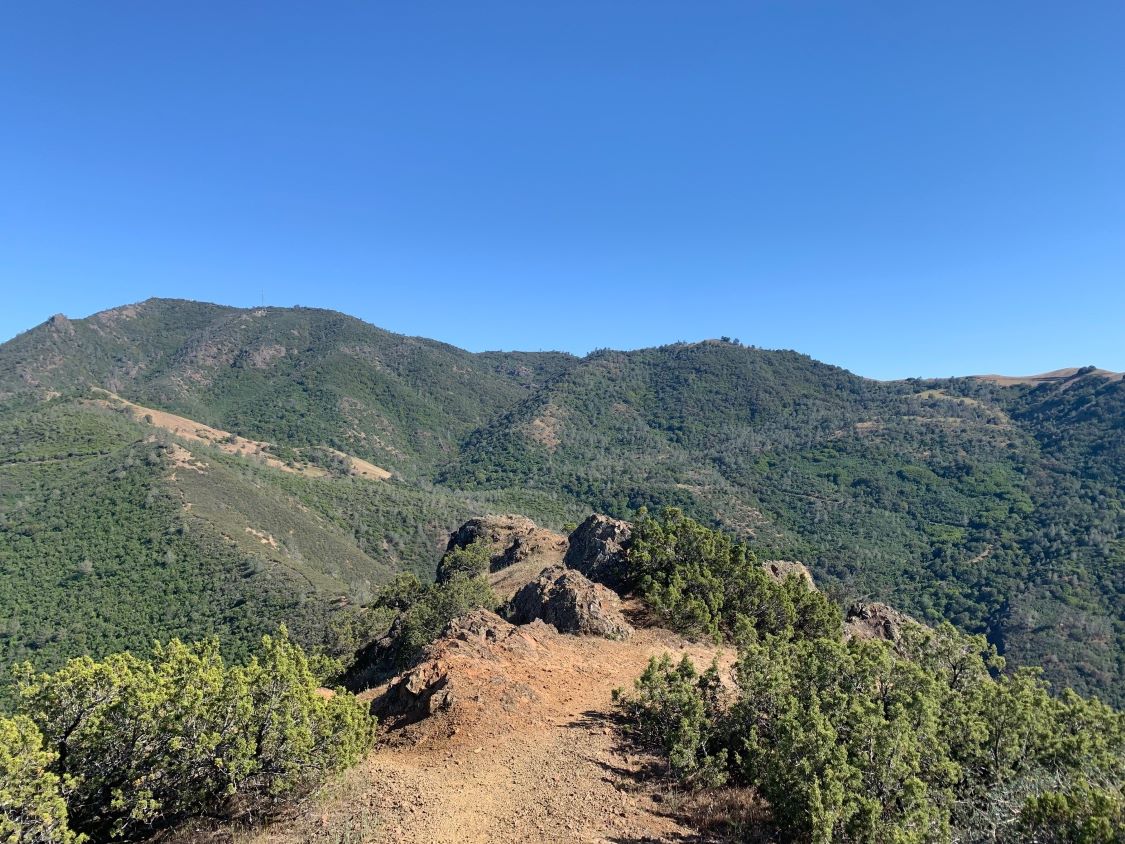
View from Eagle Peak. Photo by Mary Nagle
A fragment of this geologic feature—known as the Coast Range ophiolite—is found on the north of the mountain and draws a line from Eagle Peak to Mitchell Rock, the Mount Zion quarry, and Murchio Gap.
2. Mitchell Rock: Pillow Basalt
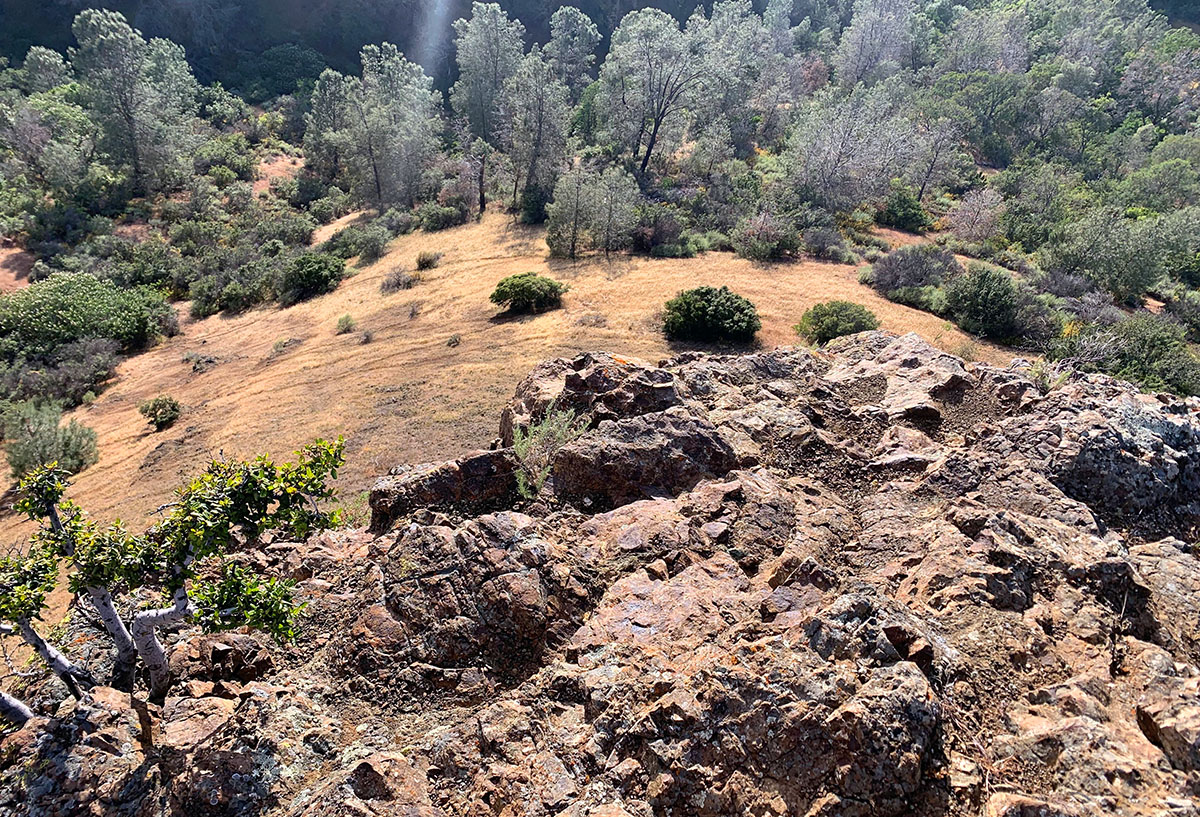
Mitchell Rock in Mount Diablo State Park. Photo by Mary Nagle
The topmost part of Mount Diablo’s ophiolite is comprised of pillow basalt. The pillow basalt was formed by lava flows that occur when molten lava erupts underwater.
The molten lava solidifies when rapidly cooled, and then additional lava erupts through the new crust, forming pillow-like structures.
This basalt contains microscopic crystalline textures and weathers to a yellow or reddish-brown soil, such as can be found in Mitchell Canyon and the aptly named Red Road.
You can see well-defined “pillows” in the pillow basalt on Mitchell Rock.
3. Burma Road Trail: Serpentinite
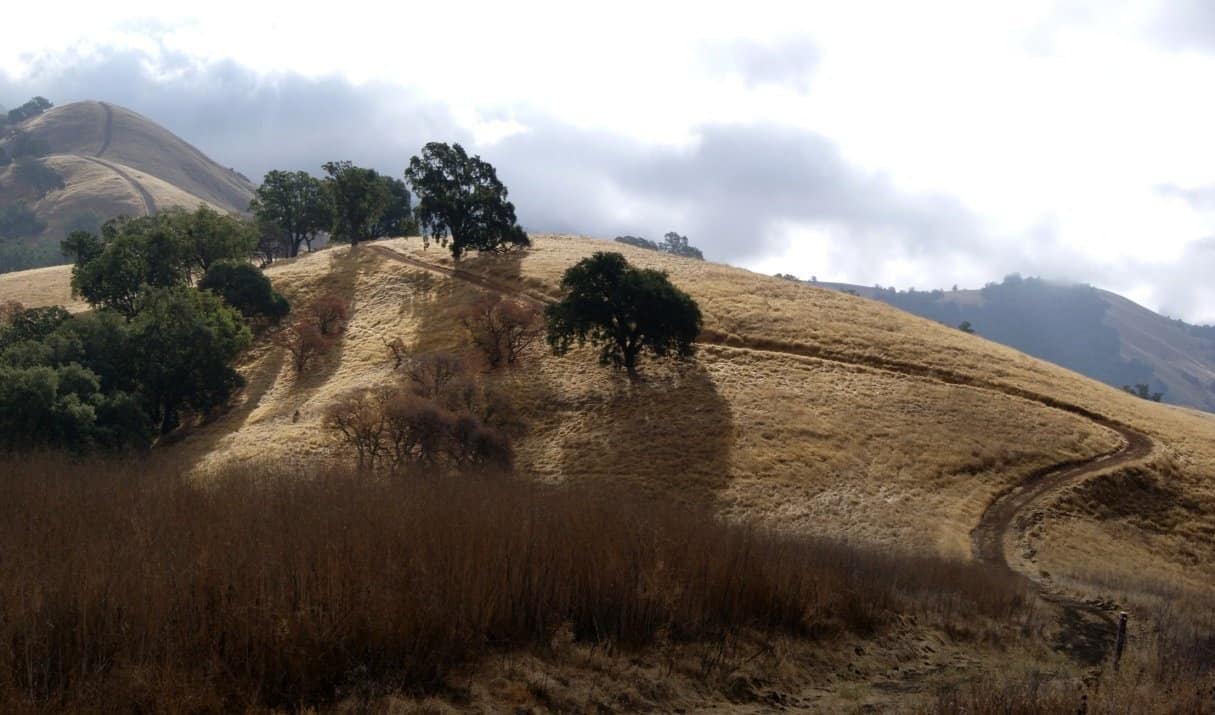
Burma Road Trail. Photo by Bob Brittain
Another rock that stands out on Mount Diablo is serpentinite, the state rock of California. Serpentinite has a high magnesium content, and when exposed to weather it appears greenish gray to grayish orange.
A good place to see serpentinite is on the Burma Road Trail on Long Ridge. The trail will reward you with crystalline pyroxenite, a key mineral in serpentinite, that catches the sun and sparkles as you walk along the trail.
4. Mount Diablo Summit and North Peak: The Franciscan Mélange

North Peak in Mount Diablo State Park. Photo by Seth Adams
The treeless slopes wrapped around Mount Diablo’s summit and North Peak are comprised of a diverse mix of rocks known by geologists as Franciscan mélange.
The Franciscan mélange is found throughout the coastal ranges of California.
Mount Diablo and North Peak are comprised of blocks of basalt, chert, and graywacke sandstone. They appear as rough and jagged masses of burly rock.
Franciscan Mélange
Pillow Basalt on the Mary Bowerman Trail
Radiolarian Chert on the Mary Bowerman Trail
Graywacke Sandstone on the Mary Bowerman Trail
5. Castle Rock, Rock City, Cave Point, and Knobcone: Domengine Sandstone
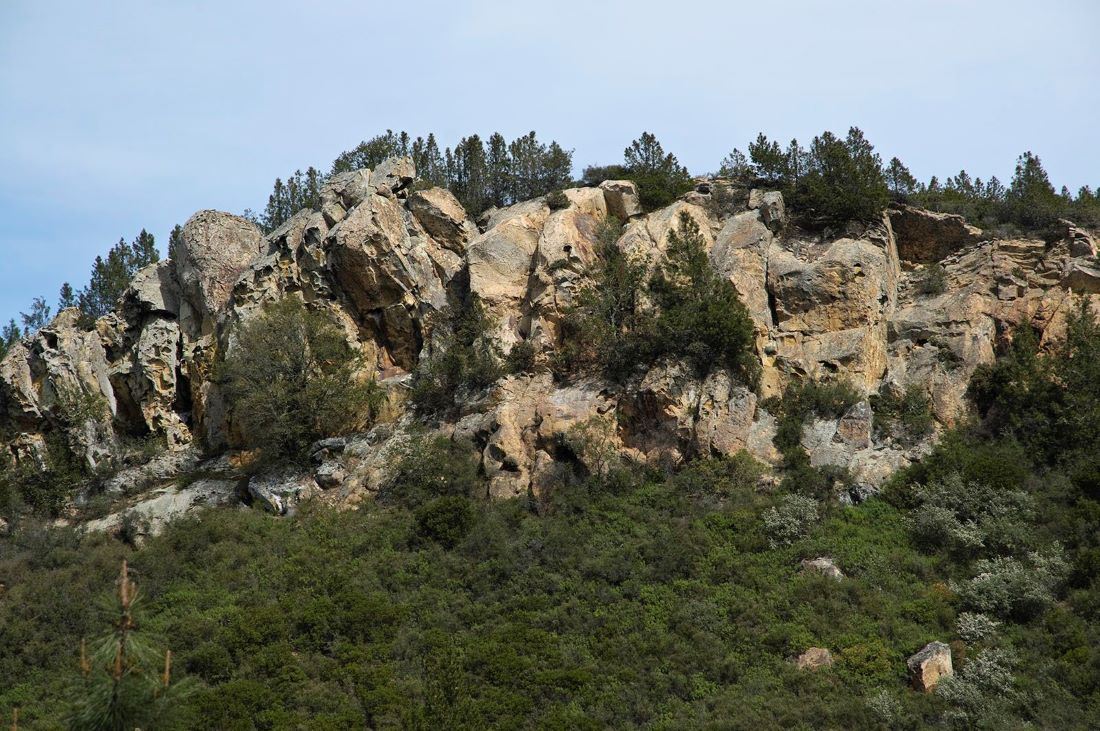
Rocky cliffs in the Knobcone Point area of Save Mount Diablo’s Curry Canyon Ranch. Photo by Scott Hein
About 33 to 55 million years ago, the ancestral Sierra Nevada underwent a period of weathering during a period of climate warming.
Massive amounts of sandy material were transferred into and throughout an inland sea in the Central Valley, creating shallow marine basins, shorelines, and backwater, tidal marsh areas.
Deposits from the Eocene era form the sandy rock formations along the south and west side of Mount Diablo. Referred to as the Domengine Formation, these rocks are seen clearly at Castle Rock, Rock City, and Cave Point as well as Knobcone Point.
Some of the rocks are rich in turritella (marine snail) fossils; some have formed into wind caves and tunnels because of erosion and weathering.
Blackhawk and Fossil Ridges (and the Summit Museum!): Fossils in the Briones Formation

Mount Diablo summit building. Photo by Cris Benton
Did you know that the summit museum building was built with material quarried from Fossil Ridge?
Look closely the next time you visit, and you’ll be able to spot fossilized shells on its exterior walls! Impress your friends and family when you tell them that these building materials came from fossiliferous beds that are known as the Briones Formation.
On the south side of the mountain in the Blackhawk Ranch quarry (which is managed by UC Berkeley and not open to the public), an abundance of animal fossils has been found. These fascinating fossils include rhinoceros, horses, smaller animals and even a mastodon skull.
The land that is now tilted vertically upwards from its original horizontal configuration formed the ridges, or “hogbacks” of Blackhawk and Fossil Ridge.
More to Explore on Mount Diablo’s Geology
- Mount Diablo’s Trail through Time: A 6.3-mile trek through 190 million years of geologic history on California’s Mount Diablo.
- A Geology Tour on the Mary Bowerman Trail: Featuring naturalist Ken Lavin, this guided hike focuses on the geology of California’s 3,849-foot Mount Diablo.

